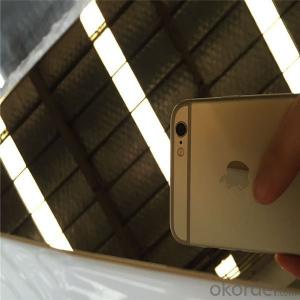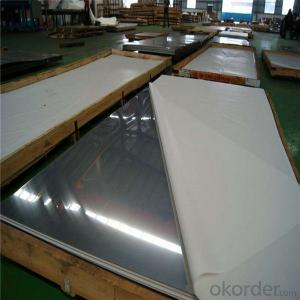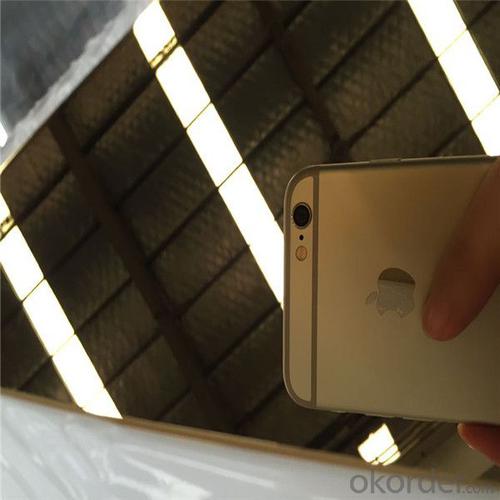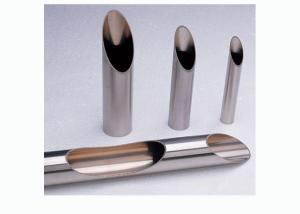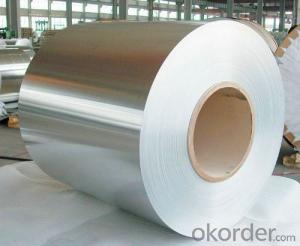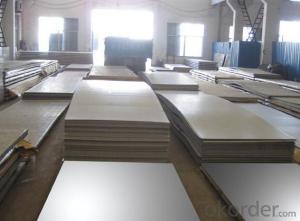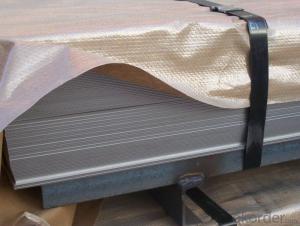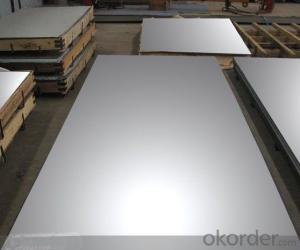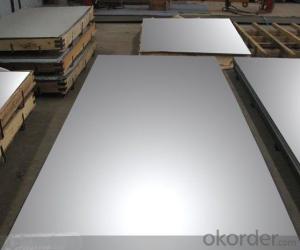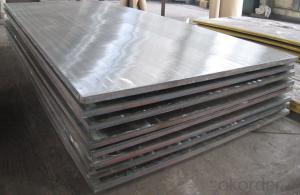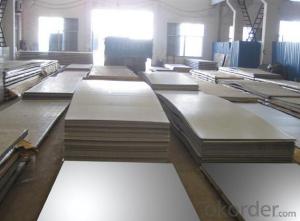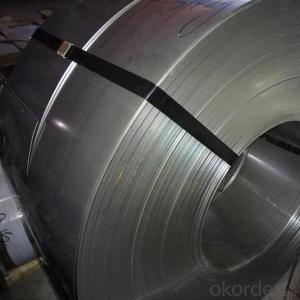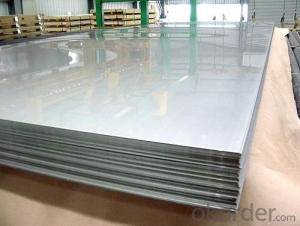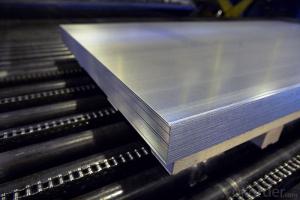201 Stainless Steel Metal Plate/Sheet
- Loading Port:
- Shanghai
- Payment Terms:
- TT OR LC
- Min Order Qty:
- 4 m.t.
- Supply Capability:
- 20000 m.t./month
OKorder Service Pledge
OKorder Financial Service
You Might Also Like
Specification
201 Stainless Steel Metal Plate/Sheet
Product Description
201 Stainless Steel Metal Plate/Sheet | |
specification | 1000mm*2000mm 1219mm* 2438mm or as your requirement |
Surface | 2B/cold rolled ,hot rolled ,hairline ,mirror |
type | Sheet/coil |
Thickness | 0.3mm~50mm |
Mill | TISCO/Bao steel |
Usage | Plate heat exchanger, bellows, household goods (1,2 tableware, cabinets, indoor pipes, water heaters, boilers, bath), auto parts (windshield wipers, muffler, moldings), medical equipment, building materials, chemical, food industry , agriculture, ship parts, and so on. |
Packing | interleaving paper kraft paper and wooden pallet |
Payment terms | 30%T/T in advance ,the balance against the B/L copy 30%T/T in advance ,the balance against the L/C at sight 100%L/C at sight |
Delivery Time | 10 days after received the deposit of T/T 10 days after received the deposit of L/C original |
We can customize the size you need ,please feel free to contact us!! | |
Grade | Chemical composition | ||||||
C≤ | Si≤ | Mn≤ | P≤ | S≤ | Ni | Cr | |
201 | 0.15 | 1.00 | 5.5-7.5 | 0.5 | 0.03 | 3.50-5.50 | 16.00-18.00 |
202 | 0.15 | 1.00 | 7.5-10.0 | 0.5 | 0.03 | 4.00-6.00 | 17.00-19.00 |
304 | 0.08 | 1.00 | 2.00 | 0.045 | 0.03 | 8.00-11.00 | 18.00-20.00 |
304L | 0.03 | 1.00 | 2.00 | 0.045 | 0.03 | 8.00-12.00 | 18.00-20.00 |
309 | 0.2 | 1.00 | 2.00 | 0.04 | 0.03 | 12.00-15.00 | 22.00-24.00 |
309S | 0.08 | 1.00 | 2.00 | 0.045 | 0.03 | 12.00-15.00 | 22.00-24.00 |
310 | 0.25 | 1.50 | 2.00 | 0.04 | 0.03 | 19.00-22.00 | 24.00-26.00 |
310S | 0.08 | 1.00 | 2.00 | 0.045 | 0.03 | 19.00-22.00 | 24.00-26.00 |
316 | 0.08 | 1.00 | 2.00 | 0.045 | 0.03 | 10.00-14.00 | 16.00-18.00 |
316L | 0.03 | 1.00 | 2.00 | 0.045 | 0.03 | 10.00-14.00 | 16.00-18.00 |
316Ti | 0.08 | 1.00 | 2.00 | 0.045 | 0.03 | 10.00-14.00 | 16.00-18.00 |
2205 | 0.03 | 1.00 | 2.00 | 0.03 | 0.02 | 4.50-6.50 | 22.00-23.00 |
410 | 0.15 | 1.00 | 1.00 | 0.04 | 0.03 | 0.6 | 11.50-13.50 |
430 | 0.12 | 0.12 | 1.00 | 0.04 | 0.03 | 0.6 | 16.00-18.00 |
Product Show
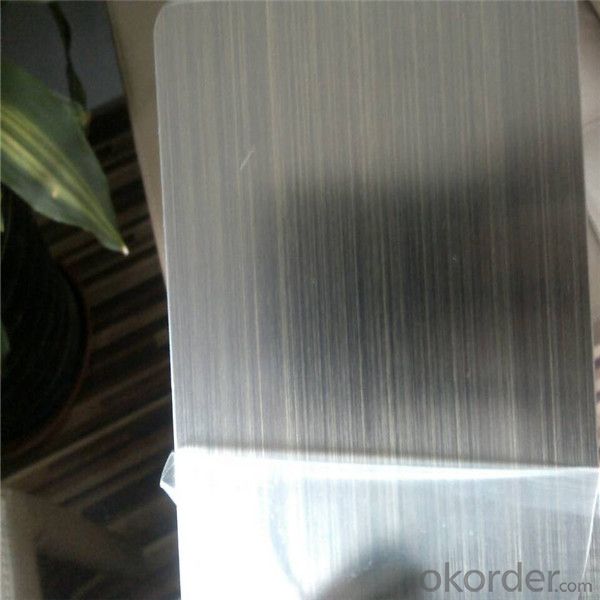
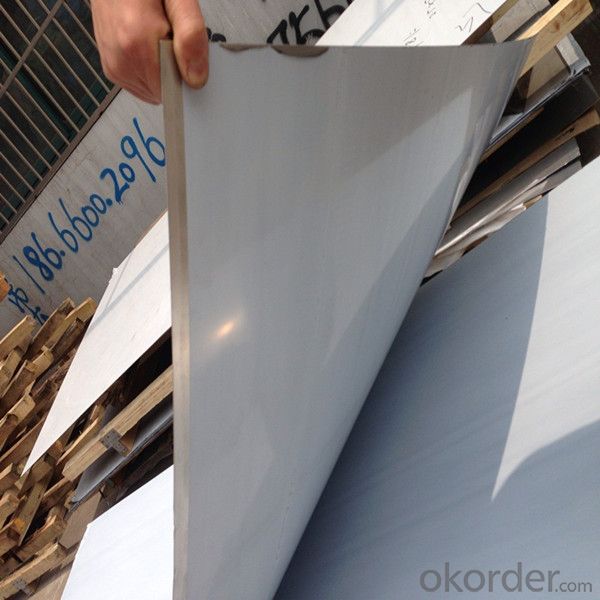
Trade & Market
| Main Markets: | Africa Northern Europe Southern Europe Eastern Europe Central America South Asia Eastern Asia Western Europe South America North America Domestic Market Southeast Asia | |
| Total Annual Sales Volume: | Above US$100 Million | |
| Export Percentage: | 71% - 80% |
Factory Information
| Factory Size (Sq.meters): | Above 100,000 square meters | |
| Factory Location: | Luogu Industrial Zone, Dainan Town, Xinghua City, Jiangsu Province. China | |
| Number of Production Lines: | Above 10 | |
| Number of R&D Staff: | 11 - 20 People | |
| Number of QC Staff: | 21 - 30 People | |
| Contract Manufacturing: | Design Service Offered Buyer Label Offered |
- Q: How do you prevent pitting on stainless steel sheets?
- To prevent pitting on stainless steel sheets, it is important to avoid exposure to corrosive substances such as chloride-based cleaners or acids. Regular cleaning using mild, non-abrasive cleaners and soft cloths is recommended. Additionally, ensuring proper ventilation and avoiding prolonged exposure to high humidity or saltwater environments can help prevent pitting. Regular inspections and prompt repairs of any scratches or damages can also contribute to maintaining the integrity of stainless steel sheets and preventing pitting.
- Q: Can stainless steel sheets be used for decorative wall panels?
- Yes, stainless steel sheets can be used for decorative wall panels. Stainless steel is a versatile material that can be easily shaped and manipulated to create various designs and patterns. It is known for its sleek and modern appearance, making it a popular choice for contemporary and industrial-style interiors. Stainless steel sheets are available in different finishes, such as brushed, mirrored, or textured, allowing for further customization and adding visual interest to the wall panels. Additionally, stainless steel is resistant to corrosion, durable, and easy to clean, making it suitable for high-traffic areas or environments prone to moisture or humidity. Overall, stainless steel sheets can provide a stylish and functional solution for decorative wall panels.
- Q: Are stainless steel sheets suitable for oil and gas applications?
- Stainless steel sheets prove to be a suitable option for oil and gas applications. Renowned for their exceptional resistance to corrosion, stainless steel sheets are extremely well-suited for deployment in challenging environments, such as those encountered within the oil and gas industry. They can endure exposure to a wide array of corrosive substances, including acids, alkalis, and saltwater, without experiencing degradation or corrosion. Moreover, stainless steel boasts impressive strength and durability, rendering it capable of withstanding the high-pressure conditions typically encountered during oil and gas operations. Additionally, it exhibits resistance to elevated temperatures, which is particularly crucial in scenarios necessitating heat resistance. Furthermore, stainless steel sheets can be conveniently fabricated and molded to meet specific design requirements, thereby affording flexibility in engineering and construction endeavors. Overall, the blend of corrosion resistance, strength, and adaptability solidifies stainless steel sheets as an outstanding choice for employment in oil and gas applications.
- Q: 304 stainless steel plate surface quality inspection method which has several?
- If uneven surface oxide thickness of stainless steel plate, the surface of base metal thick smooth places and thin places following different degrees of surface and acid dissolved and oxidized surface oxide skin skin attachment site base metal by the acid erosion degree is different, so the steel plate surface is not uniform. Therefore, when the heat treatment is heated, the oxide scale must be uniformly formed. To achieve this, we must pay attention to the following problems: stainless steel plate in the heating oil if the workpiece surface, oil adhesion of oxide thickness parts and other parts of the oxide thickness and composition is different, and will produce carburizing.
- Q: Can stainless steel sheets be used for roofing?
- Yes, stainless steel sheets can be used for roofing. Stainless steel is highly durable, corrosion-resistant, and can withstand extreme weather conditions, making it a suitable material for roofing applications.
- Q: What is the corrosion resistance of stainless steel sheets?
- The high corrosion resistance properties of stainless steel sheets are well-known. This is because the alloy contains chromium, which creates a protective oxide layer on the steel's surface. This oxide layer acts as a barrier, preventing oxygen and moisture from reaching the steel underneath. Consequently, stainless steel sheets exhibit remarkable resistance to rust, staining, and corrosion in different environments, including exposure to water, chemicals, and extreme temperatures. The level of corrosion resistance can vary depending on the grade and composition of the stainless steel. In general, higher chromium and nickel content result in better corrosion resistance. Therefore, stainless steel sheets are extensively utilized in industries like construction, automotive, and food processing, where durability and resistance to corrosion are of utmost importance.
- Q: What are the different types of stainless steel alloys used for sheets?
- Sheets can be made from various types of stainless steel alloys, each with its own unique properties and applications. Some commonly used stainless steel alloys for sheets include: 1. Austenitic Stainless Steel: This is the most commonly used type of stainless steel, offering excellent corrosion resistance, high ductility, and good formability. It finds applications in food processing, chemical equipment, and architecture. 2. Ferritic Stainless Steel: Ferritic stainless steel alloys are known for their high resistance to stress corrosion cracking and good thermal conductivity. They are commonly used in automotive exhaust systems, heat exchangers, and appliances. 3. Martensitic Stainless Steel: Martensitic stainless steel alloys are known for their high strength, hardness, and wear resistance. They find applications in cutlery, surgical instruments, and turbine blades. 4. Duplex Stainless Steel: Duplex stainless steel alloys combine the properties of both austenitic and ferritic stainless steels. They offer excellent corrosion resistance, high strength, and good weldability. They are commonly used in oil and gas industry equipment, chemical processing, and marine applications. 5. Precipitation-Hardening Stainless Steel: These alloys can be heat treated and provide high strength, good corrosion resistance, and excellent toughness. They are commonly used in aerospace components, the nuclear industry, and high-performance applications. Each stainless steel alloy has its own specific composition and properties, making it suitable for different applications. Factors such as corrosion resistance requirements, strength requirements, and the environment in which the sheets will be used determine the choice of alloy.
- Q: Are stainless steel sheets recyclable?
- Indeed, stainless steel sheets possess high recyclability. This sustainable and eco-friendly material can be recycled endlessly, maintaining its properties intact. The process of recycling entails gathering and organizing stainless steel scraps, melting them, and subsequently employing the resulting material to fabricate fresh stainless steel products, notably sheets. By recycling stainless steel sheets, not only are we preserving natural resources and diminishing waste, but we are also conserving energy and mitigating greenhouse gas emissions linked to the manufacturing of new stainless steel.
- Q: Can stainless steel sheets be used for electrical or electronic applications?
- Yes, stainless steel sheets can be used for electrical or electronic applications. Stainless steel has excellent electrical conductivity and is resistant to corrosion, making it an ideal material for various electrical components. It is commonly used in electrical enclosures, switchgear, control panels, and other electrical equipment. Additionally, stainless steel sheets can be fabricated into different shapes and sizes, making them suitable for various electronic applications such as printed circuit boards (PCBs), connectors, and terminals. The durability and high temperature resistance of stainless steel also make it a preferred choice for electrical and electronic applications in harsh environments.
- Q: Are stainless steel sheets fire resistant?
- The fire resistance properties of stainless steel sheets are exceptional. With their high melting point and low thermal conductivity, stainless steel can endure prolonged exposure to high temperatures without experiencing significant structural alterations or losing strength. As a result, stainless steel sheets possess remarkable resistance to fire and heat harm. Furthermore, stainless steel does not emit toxic fumes when exposed to fire, further enhancing its safety in environments prone to fires. Consequently, stainless steel sheets are frequently employed in situations where fire resistance is of utmost importance, such as the construction of fire doors, fire escapes, and fire-resistant enclosures.
Send your message to us
201 Stainless Steel Metal Plate/Sheet
- Loading Port:
- Shanghai
- Payment Terms:
- TT OR LC
- Min Order Qty:
- 4 m.t.
- Supply Capability:
- 20000 m.t./month
OKorder Service Pledge
OKorder Financial Service
Similar products
Hot products
Hot Searches
Related keywords
